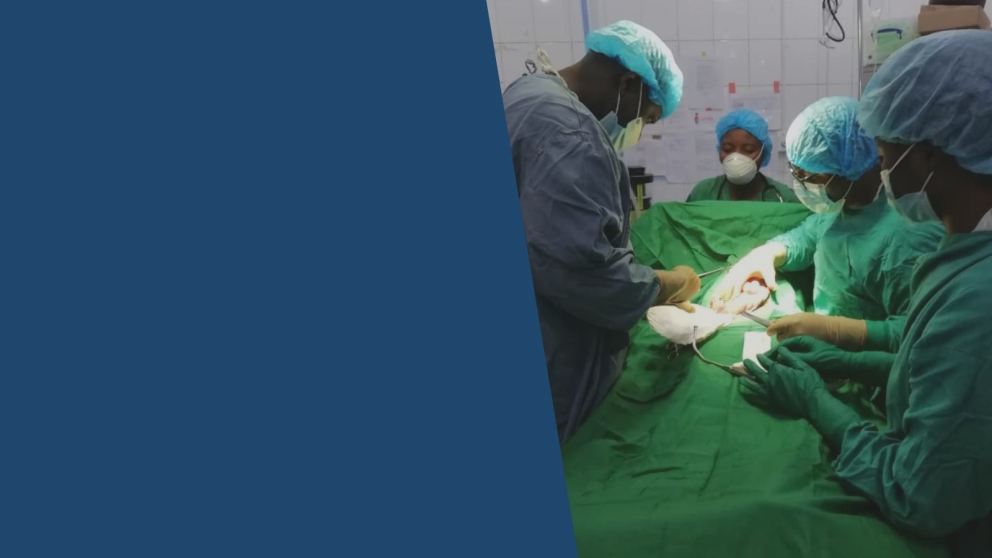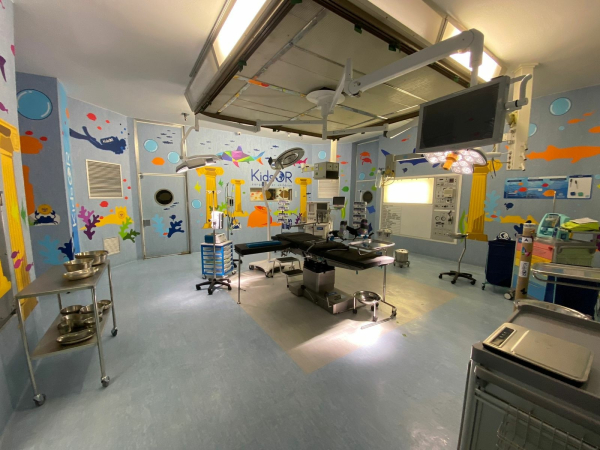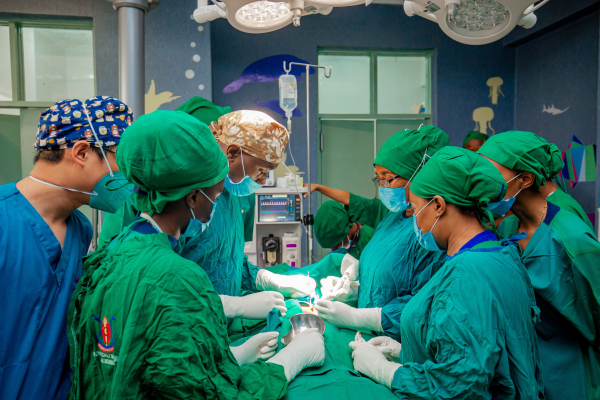
Q&A with Dr Josaphat from DRC
In September, we officially announced the installation of a life-changing children’s Operating Room with our partners Smile Train at Bethesda Hospital (Goma). The hospital, located in the North Kivu province in the Democratic Republic of Congo, serves an average of 200 patients per day. We spoke to Dr Josaphat Paluku Katswere, a surgeon at the hospital, on the significance of having a dedicated paediatric theatre since it was revamped and opened for use in May 2021.
What impact has the Operating Room had since installation three months ago?
We now have appropriate equipment for children surgery which makes a huge difference as opposed when using equipment meant for adults. The theatre has also enabled us to operate on time, without delays, because we don’t have to ask for space from general theatre.
What are some of the challenges you have experienced in delivering quality care to patients (children)?
The main challenge has been the lack of some specific materials and/or equipment for specific procedures. The other challenge is that we don’t have health insurance at the hospital hence most children will be asked to pay for services. Given the context of our region, with recurrent conflicts families/children will have to spend their little money to access health services, the money is never enough most times.

KidsOR and Smile Train Operating Room
Why is having a dedicated paediatric Operating Room important?
The burden of surgical condition is high. A dedicated room for children allows health workers to work in a good and secure environment. Also, with this kind of a room, children are relaxed and in a good mood before and after operation.
Which are the common surgeries you perform on children at your hospital? Do you have a case or two of surgeries that you have recently performed that has stuck with you?
Common surgeries are cleft, trauma, burns, and other congenital anomalies. The first case that touched my heart was an 11-year-old girl who was brought in with a burst abdomen following a traffic road accident. Her intestines were all out. She was admitted in theatre for a surgical operation. Her intestines were put back in the abdominal cavity, then a bogota bag (a sterile plastic bag that can be used for closure of abdominal wounds) was put to protect the organs given that the abdominal wall had to be left open for some days. Three days later, she was readmitted in theatre, lavage was done (washing out an organ such as stomach/ wound by flushing it with a fluid) and closure of the abdominal wall was done. On the fifth post-operative day, the dressing was changed, and the surgical site was clean. The patient was discharged on the eighth day.
Are children and families ever nervous about receiving surgery? How does the look of a hospital or operating room affect that?
It’s not always easy to come to terms with receiving surgery. But with the look of this Operating Room, the fear decreases be it for the patient or caretaker.
Share article
Recent Posts


Similar Posts
Namibia prioritising the lives of children.
Paediatric surgery included in Namibia's healthcare strategy going forward





